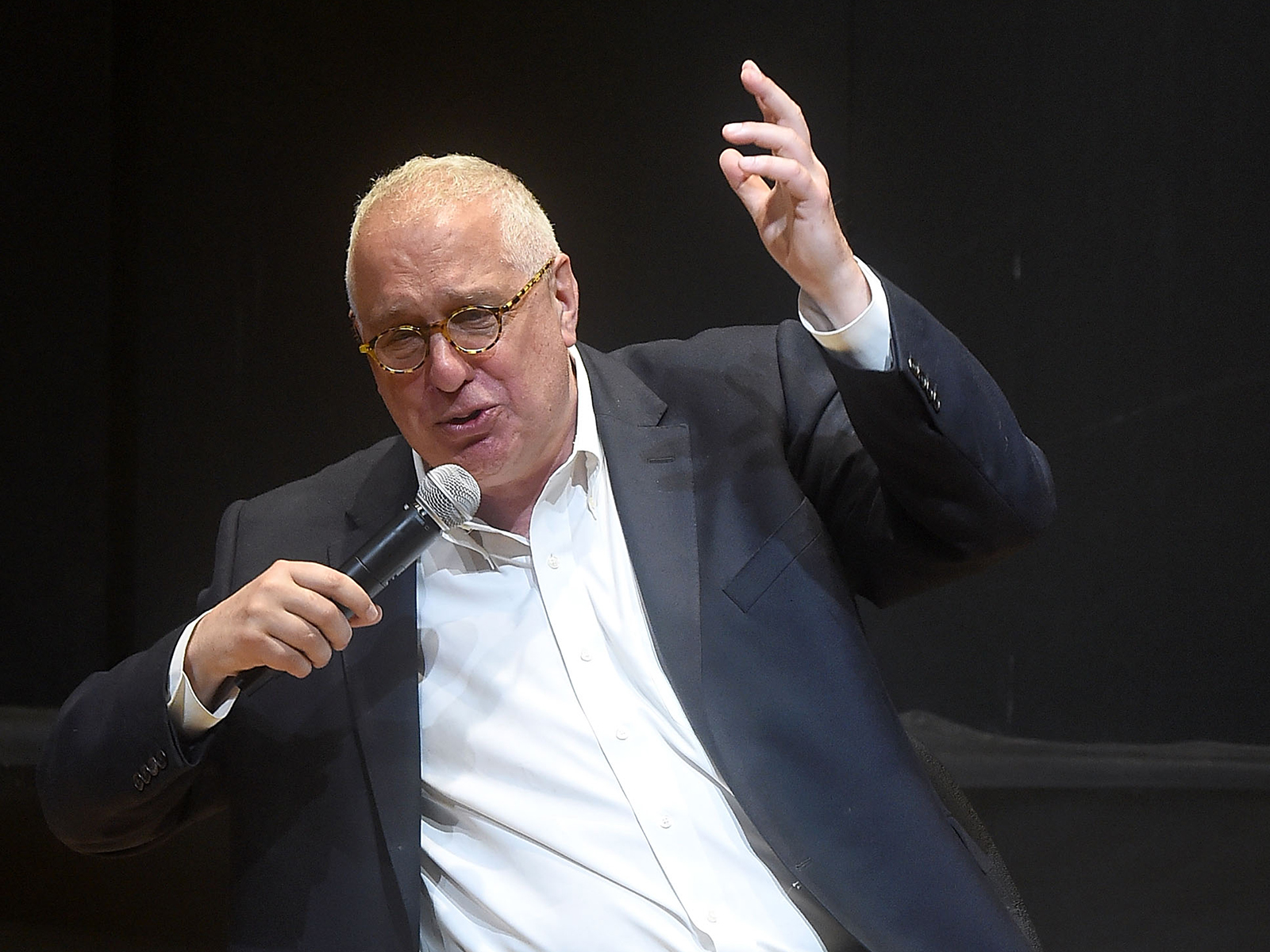
- Film
Docs: ‘My Psychedelic Love Story” – Errol Morris on Timothy Leary
The new documentary by Errol Morris, the acclaimed Oscar-winning director (The Fog of War: Eleven Lessons from the Life of Robert S. McNamara), is based on a memoir, Joanna Harcourt-Smith’s Tripping the Bardo with Timothy Leary: My Psychedelic Love Story, which was published in 2013. Sadly, the author died on October 12, in Santa Fe, New Mexico, at the age of 74, and didn’t live to see either the final version of the film or the audience’s reaction to it.
The title is based on Harcourt-Smith’s book, but Morris doesn’t treat her accounts of her doomed romance with Leary as hard facts. Moreover, the movie doesn’t pretend to understand the complex, paradoxical life of Leary, the Harvard professor who was one of the most famous figures of the late 1960s and 1970s, who is perhaps best known for coining the phrase “Turn on, tune in, drop out.”
The documentary consists of 10 hours of tapes and archival materials from the exotic sites that the couple visited as they fled from their pursuers while tripping and relishing their cool lifestyle. The travelogue portion includes footage from St. Moritz, Cannes, Marbella, and other places.
One of the womanizing Leary’s many female companions – although she was not one of his five wives – Harcourt-Smith was at the time a young, wealthy, and hedonistic woman. A privileged Swiss boarding-school girl, she grew up on Paris’s chic Avenue Foch, spent summers in the French Riviera, and spoke many languages. She began exploring her sexuality as a teenager and claimed among her lovers the German photographer and industrialist Gunther Sachs (who, at one point, was married to Brigitte Bardot), and among her friends the noted artist Salvador Dali.
Dealing with the bizarre chapter of 1960s conspiracy and psychedelia, My Psychedelic Love Story owes its existence in part to Wormwood, the Netflix miniseries in which Morris investigated whether the FBI used LSD to take down the government scientist Frank Olson.
While Wormwood unfolded through interrogation sessions and hotel room reenactments, My Psychedelic Love Story shows Morris’ gentler, kinder persona as he focuses on one particular – and peculiar – bittersweet romance.
The Swiss adventurer Harcourt-Smith met Leary during his exile in the early 1970s, and quickly forged a bond with him. Their romance found them careening from Afghanistan into the U.S., where Leary was taken into custody: Harcourt remained committed to him throughout his time in prison.
That part of the story culminated with Leary’s much-publicized decision to go from LSD advocate to FBI informant. He and Harcourt-Smith then lived under witness protection until their relationship ended. (Leary was released from prison on April 21, 1976, by the then California Governor Jerry Brown; he died of prostate cancer in 1996 at age 75.)
Decades later, Morris finds a reflective woman, haunted by her unwieldy past, and even herself uncertain of to what extent she had been manipulated into precipitating Leary’s downfall. However it happened, after a trip to Kabul, Leary and Harcourt-Smith wound up back in the U.S, with Leary in prison. While Leary was behind bars in Folsom Prison, their relationship continued to take some unusual turns. Harcourt-Smith’s recalls how she helped Leary to trip in jail by sneaking in acid-coated stamps and storing them in her bellybutton.
She’s haunted by her controversial role in the story – “I’m not a conspiracy person,” she says – but she claims that Wormwood helped her realize how the FBI had manipulated her to get Leary to become a snitch himself. Labeling herself “an object of entrapment,” she wrestles with the paradox of celebrating her hedonistic past, even when it paved the way to a darker chapter.
Set against the backdrop of Nixon’s “total war” on drugs, My Psychedelic Love Story is at its most sociologically resonant when showing how the liberated spirit of the hippie revolution came to an end in part due to the (mis)conduct and disengagement of its own members.
The movie is less concerned with what actually ended the relationship between Leary and Harcourt-Smith than with her efforts to make sense of it. In the process, Harcourt-Smith argues with the filmmaker and herself, trying to rationalize her past behavior. We watch her listening, often with her eyes closed, struggling to understand the meaning of what she had done.
While suggesting that Harcourt-Smith was not as guilty of Leary’s downfall as she had thought, the movie doesn’t arrive at any firm conclusions other than to illustrate the unstable emotional state of a woman who inadvertently went on to become both the heroine and victim of her own adventurous lifestyle.
In revisiting her affair with Leary, Harcourt-Smith lends the documentary a giddy, entertaining tone through her recollections of some oddball incidents. My Psychedelic Love Story, light and in moments even whimsical, is a less substantial feature than Morris’ deeper and more consequential works, but it’s always fun to watch.

